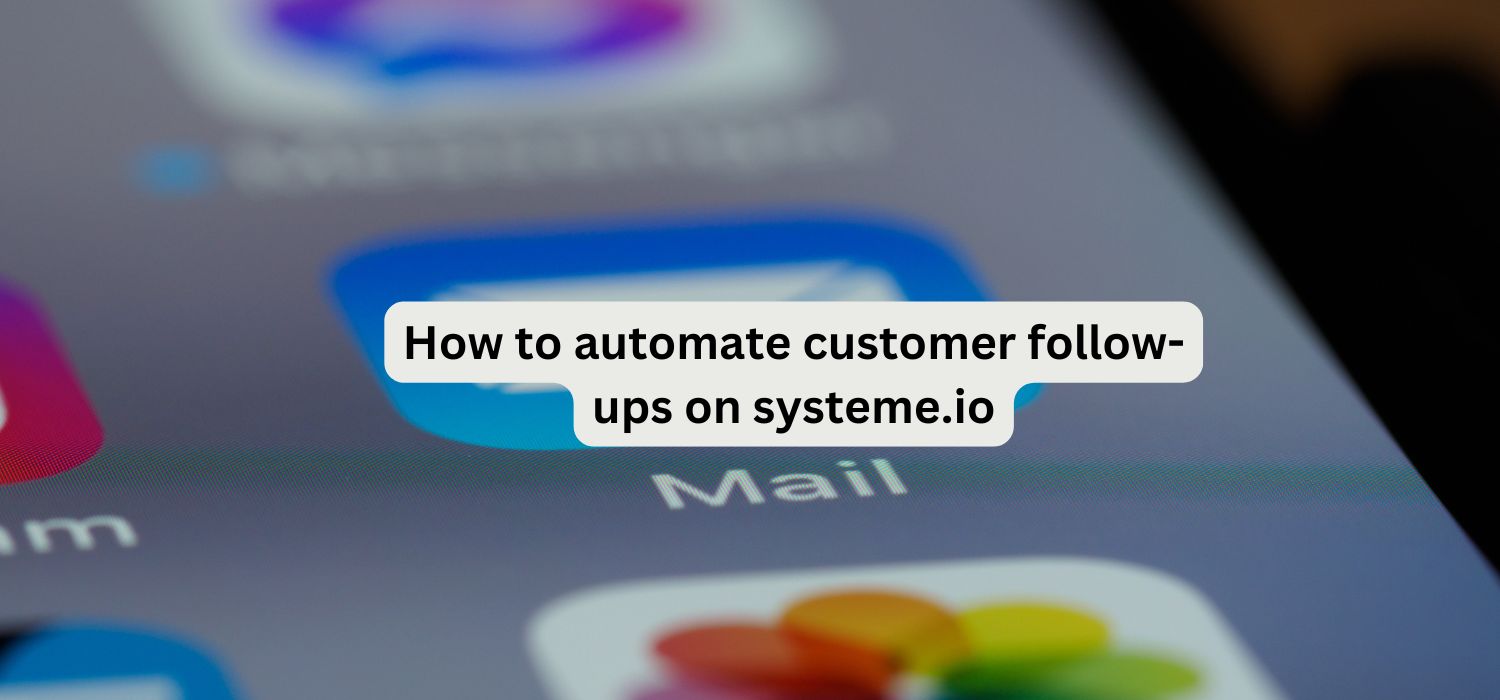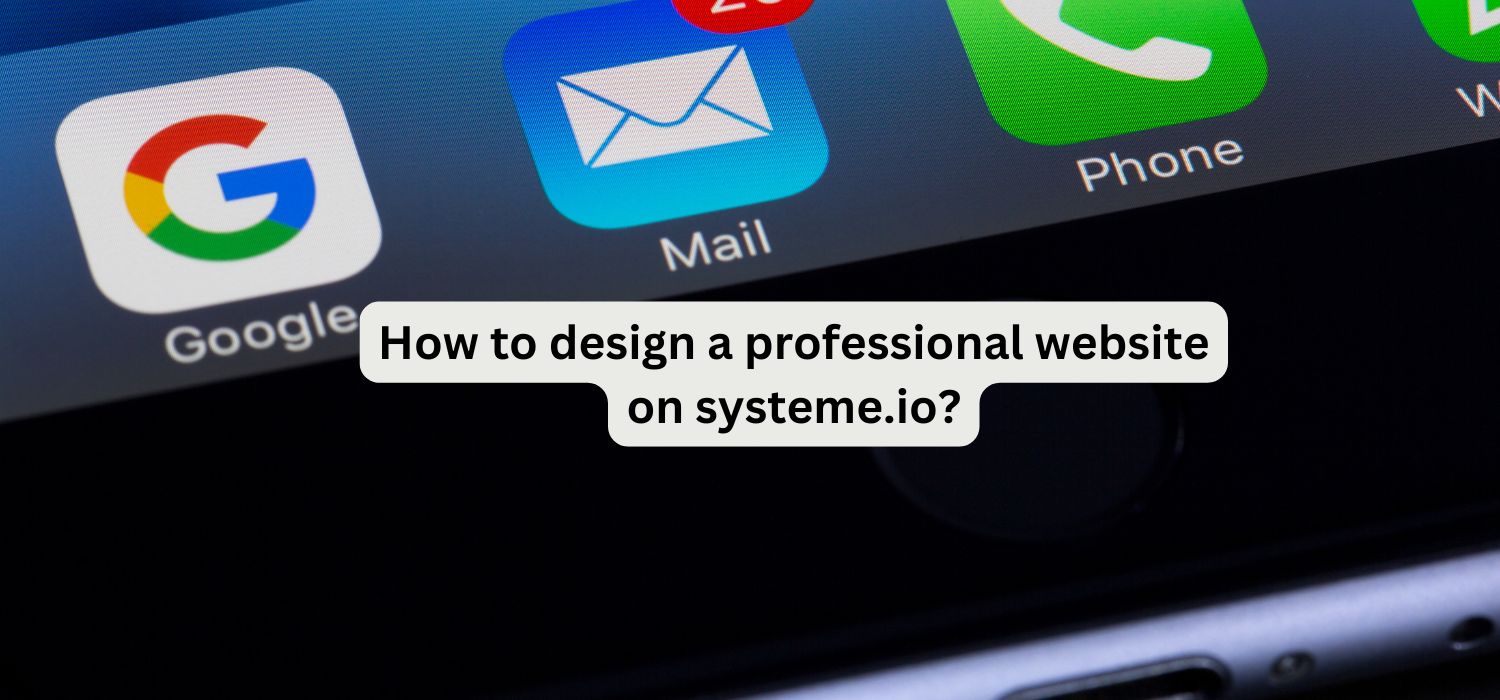Automating customer follow-ups is crucial for building and maintaining strong relationships with your customers. Whether it’s to nurture leads, onboard new customers, or engage previous buyers, automated follow-ups save time and ensure consistent communication. Systeme.io offers powerful automation tools that allow you to set up personalized, timely follow-ups for various customer interactions. This guide will walk you through how to automate follow-ups effectively.
1. Log in to Your Systeme.io Account – customer
Start by logging into your Systeme.io account. If you don’t already have one, sign up for a new account and complete any initial setup steps. Once logged in, head to the dashboard where you can access all automation tools, including email marketing, workflows, and triggers.
2. Create or Segment Your Email List
Before setting up automated follow-ups, it’s essential to have a well-organized email list. If you’re starting from scratch, create a new list by going to Contacts and selecting Lists from the dashboard. Systeme.io allows you to segment your list based on criteria like customer behavior, purchase history, or signup source.
- New Leads: Segment for leads who are just entering your sales funnel.
- Existing Customers: Segment for customers who have already made a purchase.
- Inactive Customers: Segment for customers who have not interacted with your emails or site recently.
Segmenting helps you tailor follow-up emails specifically for each group, improving the relevance and effectiveness of your automated follow-ups.
3. Set Up an Email Campaign for Follow-Ups- customer
Once your lists are organized, the next step is to create an email campaign tailored to follow-up with customers. To do this:
- Navigate to Emails in the main menu, then click on Campaigns.
- Create a new campaign and name it based on the purpose of the follow-up, such as “New Customer Onboarding” or “Re-engagement Campaign.”
- Inside the campaign, you’ll be able to set up individual emails that will be sent at different intervals. Each email can be customized with personalized content, images, and CTAs (Calls to Action).
For example, you might create an onboarding sequence for new customers that introduces your brand, provides usage tips, and encourages feedback. Or, if you’re following up with leads, the sequence might include emails that showcase product benefits, offer discounts, or invite them to a demo.
4. Use Automation Rules to Trigger Follow-Ups
Systeme.io’s automation rules allow you to set specific conditions that will automatically trigger follow-up emails. Here’s how to set up a rule:
- Go to Automation in the dashboard and select Rules.
- Click Create New Rule and choose a trigger event. Common trigger events include “Tag Added,” “Purchase Made,” “Form Submitted,” or “Email Opened.”
- After choosing a trigger, specify the action that follows. For example, if the trigger is “Purchase Made,” you can set the action to “Add to Campaign” to start an onboarding sequence for new customers.
Automation rules make it easy to tailor follow-ups based on real-time customer actions, which means you’re engaging customers at optimal moments without manual effort.
5. Design Personalized Follow-Up Sequences
Once your rules are set, it’s time to create the actual follow-up sequence. Go to Emails and open the campaign you created for follow-ups. Here, you can add emails and set delays between each email based on your customer’s journey stage.
- Welcome Email: Send immediately after a customer signs up or makes a purchase, welcoming them and providing essential information.
- Product Introduction: A day or two after the welcome email, send a more detailed introduction to your product or service, including usage tips and FAQs.
- Engagement Email: Send after a week to ask customers for feedback, encourage them to explore additional features, or offer special discounts for engagement.
- Re-engagement Email: If customers become inactive, use this email to reignite their interest, perhaps with a special offer or reminder of your product’s benefits.
Each email in the sequence should be carefully crafted to maintain interest and move customers closer to your desired outcome, whether it’s a purchase, repeat engagement, or feedback submission.
6. Leverage Workflow Automation for Advanced Follow-Ups
Systeme.io also offers workflow automation, which allows you to design more complex follow-up sequences based on multiple triggers and conditions. This feature is especially useful for businesses with diverse customer journeys.
To create a workflow:
- Go to Automation and click on Workflows.
- Create a new workflow and define a starting point, such as “Tag Added” or “Form Submitted.”
- Add steps to the workflow, including actions like “Send Email,” “Add Tag,” or “Wait for X days.” For example, you could set up a workflow that adds a “Customer” tag when a purchase is made, triggers a thank-you email, and then adds the customer to an upsell campaign.
Workflows are highly customizable and can be adapted to fit a variety of customer follow-up needs, allowing you to create detailed and dynamic follow-up journeys.
7. Use Tags for Targeted Follow-Ups – customer
Tags help you keep track of customer actions, preferences, and interests, which can guide your follow-up strategy. In Systeme.io, you can assign tags based on specific behaviors, such as:
- “Downloaded Ebook” for customers who downloaded a free resource.
- “VIP Customer” for repeat customers or those who spend over a certain amount.
- “Inactive” for customers who haven’t interacted with your brand recently.
Once tagged, customers can be automatically added to specific follow-up sequences that are relevant to their behaviors or status. This ensures you’re sending the right follow-ups to the right people, improving engagement and conversion rates.
8. Set Delays and Time Intervals – customer
To avoid overwhelming customers, use delays and time intervals between each follow-up email. In the email campaign editor, you can specify how long to wait between emails (e.g., 2 days, 1 week). For example:
- Immediate Welcome Email: Sent right after the customer signs up.
- 2-Day Delay: Send a follow-up introducing your products.
- 5-Day Delay: Ask for feedback or offer additional support resources.
- 1-Week Delay: Send a re-engagement email for inactive users.
Setting appropriate intervals helps keep your brand top-of-mind without bombarding your audience with messages.
9. Monitor and Adjust Follow-Up Performance
After launching your automated follow-ups, it’s essential to monitor their performance to see what’s working and where improvements are needed. Systeme.io provides analytics on:
- Open Rates: Shows how many customers are opening your emails.
- Click-Through Rates (CTR): Measures how many people are clicking on links within your emails.
- Conversion Rates: Tracks whether your follow-up emails lead to desired actions, such as purchases or form submissions.
Review these metrics regularly, and consider A/B testing subject lines, CTAs, and email content to optimize results.
10. Refine Your Strategy Based on Feedback and Data
Finally, use the insights you gather to improve your follow-up sequences continuously. If certain emails have high engagement, identify what’s working well—perhaps a specific message or offer resonates with your audience. Conversely, if you see high unsubscribe rates, consider reducing email frequency or adjusting content to better meet customer expectations.
Regularly refining your approach ensures that your follow-up strategy remains effective, relevant, and valuable to your customers.





